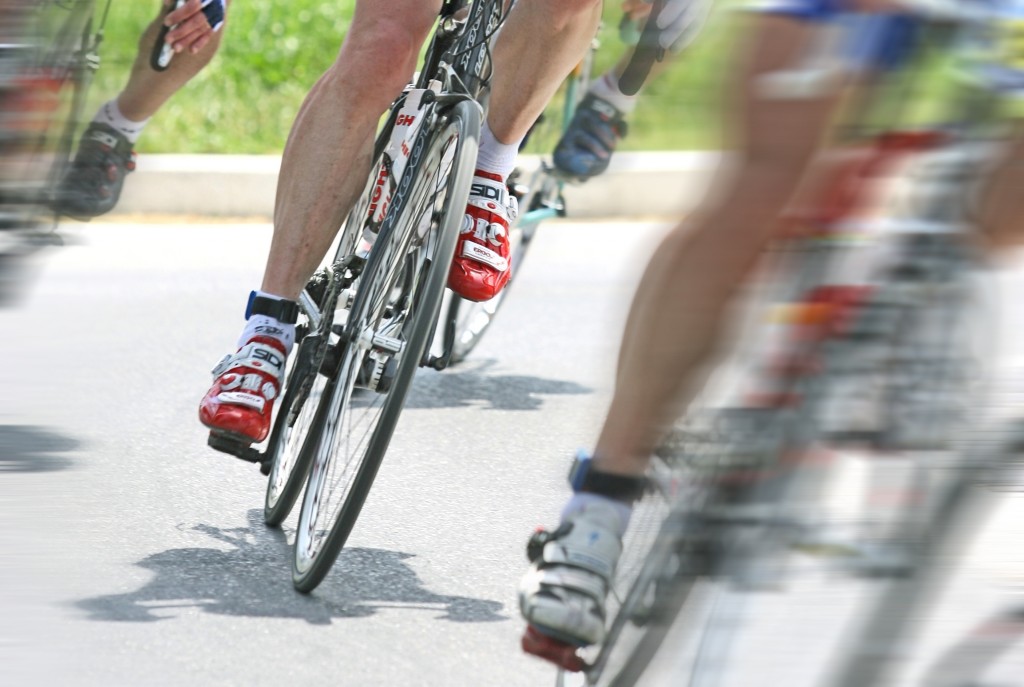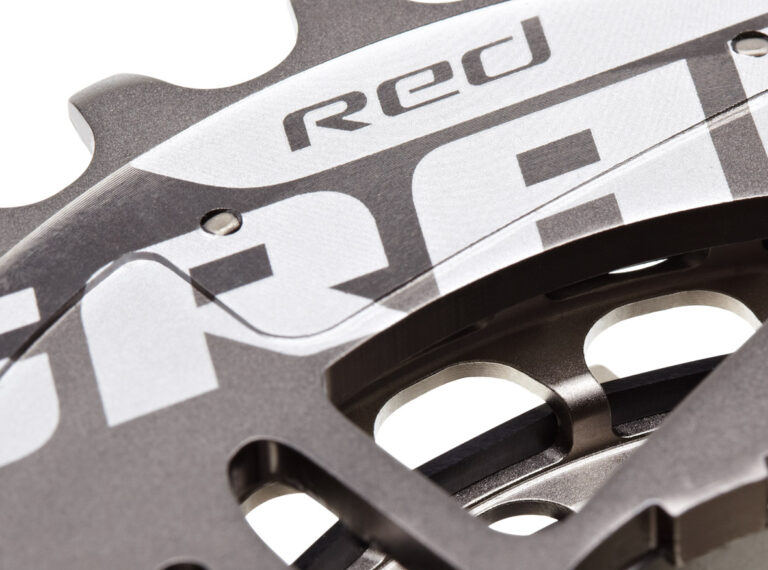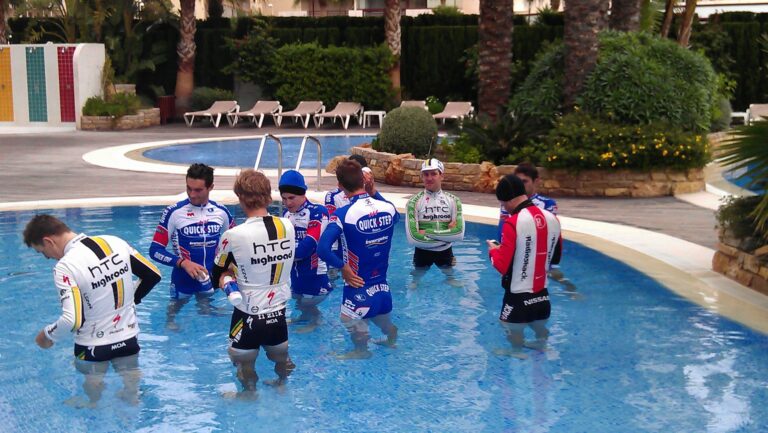
Last week we introduced you to the concept of the components of fitness and their relative implications for success in your chosen area of cycling. Specifically we looked at aerobic endurance, which is the ability to maintain a relatively low intensity exercise for long periods and strength, which is the amount of ‘force’ you can apply to the pedals.
Identifying the components of fitness most relevant to your events allows you to spend more time developing those areas in order to become better adapted to them. Using the example of the two components listed above, a rider intent on completing in regular sportive events would spend a lot more time working on the aerobic endurance component than on strength, whereas a track sprinter would do completely the opposite. Spending many hours developing heightened levels of one, often compromises the other. For example, several hours per week riding in the hills at a sustainable but relatively low intensity developing your endurance to optimum levels, wouldn’t be doing your sprinting ability many favors… and vice versa. So, particularly for time crunched riders, targeting the components of fitness can be highly beneficial.
We should state at this point that many riders complement themselves on the fact that they do a bit of everything and don’t specialize in any one area of the sport. And you quite often come across ‘strong’ riders who are happily banging away at the front of a group ride, first to the top of every hill and have a decent sprint for the town sign at the end of every ride. So it’s perfectly possible to be well developed across the range of the components of fitness. But remember the theme of our series is ‘Training for results,’ and don’t be under any illusions that having good ability in all areas of cycling means you are almost certainly compromising how good you could be if specializing in just one or two.
Certain components of fitness of course are highly transferrable. Last week we looked at how Mark Cavendish’s balance of aerobic endurance and absolute strength make him a fine road sprint specialist. But these components also transfer well to the track, where Cavendish has an impressive record prior to his career in road racing and won the scratch race on his return to the boards at the recent Revolution series in Manchester. If, however, he was intent on targeting the shorter distance sprint events on track, you can see that his requirement for higher levels of absolute strength and the subsequent increase in the amount of time spent strength training in the gym rather than on the bike might compromise his aerobic endurance performance.
A good example of the transferability of the components of fitness is seen when BMX riders switch to track sprinting. Jamie Staff and Shanaze Reade have both achieved success on the track having crossed over from BMX. The components of fitness are very similar, as we shall see, so there is a natural progression from one to the other. It doesn’t work the other way round incidentally because of the technical element involved in BMX racing. So you’re unlikely to see Sir Chris Hoy or Victoria Pendleton clearing a set of double jumps any time soon but don’t be surprised if a few more BMXers make the switch to track racing.
So following on from last week, this week we’re looking at the next two components of fitness and these are speed and power.
The components of fitness
3: Speed
What is it? Surely just the ability to ride faster? We all want that, right? Well, yes but in the context of the components of fitness ‘speed’ means how fast you can move your body rather than how fast your body is moving in miles per hour. So for a runner this would mean stride frequency or how rapidly their feet are coming into contact with the floor. For a javelin thrower it would be the speed of which they bring their arm through before release of the javelin. And for you, as a cyclist, it’s cadence, or how fast you can pedal. And more specifically, ‘speed’ is how fast you can accelerate your pedaling and how high a cadence you can maintain when you get there.
Typical events: Anything where quick changes of cadence and absolute pedaling speed is critical and particularly events where the bicycle might only have one gear so we’re talking BMX racing, track sprinting and cycle speedway. But cadence is critical to many other aspects of cycling too. Being able to change speed quickly is essential in both criterium as well as cyclo-cross racing where fast exits out of corners and quickly getting up to speed is essential. Also pedaling at higher cadences is less reliant on muscular strength so producing a given amount of power by turning the pedals faster, in an easier gear, is less fatiguing than turning a harder gear, slower, particularly over longer distances. So a sportive rider or road racer might not need the absolute high-end cadence to match a track sprinter but they would both benefit greatly from developing a relatively high cadence in their events.
How do I improve it? Cadence pyramids. These are great exercises to develop leg speed and they are basically a way of doing progressive intervals at higher and higher cadence until you can’t pedal any faster, then reversing the intervals back to where you started, hence the term pyramid.
Here’s a great example to try.
Cadence Pyramids
Where: Road or turbo or better still, rollers
Warm up for 20mins.
Select the big ring at the front, and a gear close to the top of the cassette at the back.
Now simply pedal for one minute at 80rpm followed by easy, relaxed pedaling for another minute. Next pedal at 85rpm followed by easy, relaxed pedaling for another minute. And so on, adding 5rpm per minute. Keep this going until you start bouncing uncomfortably in the saddle – at this point your losing efficiency and control (be particularly careful if you’re on the road). Work your way back down this theoretical pyramid by reducing the cadence by 5rpm in each minute ‘on.’
Spin easy for a few minutes then do another pyramid – aiming for a total of two cadence pyramids in an hour of riding.
You can progress this session by extending the ‘on’ intervals so a four week progression might look like this.
Week 1: 1minute on 1 minute off in each pyramid.
Week 2: 1min, 20secs on 1 minute off in each pyramid.
Week 3: 1min, 40secs on 1 minute off in each pyramid.
Week 4: 2mins on 1 minute off in each pyramid.
Keep doing these pyramids once per week or simply integrate high cadence intervals into your other rides and you’ll soon notice you’re comfortable spinning faster.
4: Power
What is it? A product of the previous two components of fitness strength plus speed, power is the combination of how hard you can push on the pedals and how fast you can turn them. It’s the ability to generate a very high amount of watts, in a very short amount of time.
Typical events: A key component of all sprint races but also important for shorter sprints or maximal efforts in longer races. You’ve probably heard the expression ‘power climb’ which is a short burst of very hard effort required to get up a short, steep hill in a road race. Quick, powerful reactions are also required to cover all attacks in road races to avoid getting dropped. High levels of absolute power are less important for time trialists or sportive riders who rely more on lower levels of sustainable power which we term ‘critical’ power, meaning the power which is sustainable for the duration of their events. A typical power effort in a track sprint or road race might involve an explosive ‘jump’ out of the saddle with a strong kick on the pedals and a fast acceleration up to maximum cadence, so you can see how the components of both speed and strength are the intrinsic elements of good power.
How do I improve it? The good news is that improving your strength and your cadence will lead to increased power, but you can better target power improvements by measuring your efforts, and progressing on them. The most obvious way is to use a power-measuring device such as an SRM, Powertap or similar system but these can be prohibitive due to cost. Don’t panic, great riders existed, and races were won long before the advent of Powertaps, and you can still train to increase your power by more traditional methods. Using your cadence as a measure of intensity is a great way to improve your power, the simple fact being that if you turn a certain gear at ‘x’ rpm, then turn a slightly harder gear at the same ‘x’ rpm– you’ve produced more power in the second effort. So all else being equal you’d go faster. A simple progressive programme to develop your 20sec power using both cadence and power measuring devices are outlined here.
20 second power increase (using cadence)
Where: Road or turbo
Warm up for 20 minutes.
Select the big chainring at the front and a gear half way down the block at the rear.
Ride for 20 seconds at the highest cadence you can maintain.
Spin easy for 3 minutes to recover.
Select one gear harder and try to match the cadence of the first interval for 20 seconds. If you can match the cadence of the first interval, move on to the next hardest gear and try again. Make 6 attempts at matching the cadence, then take a 10 minute easy spin recovery and make another six attempts. Don’t worry if you can’t match it, come back again in the next session and repeat the intervals. When you can match your initial cadence comfortably in all intervals, move on to the next gear and resume. And so on in the subsequent sessions. You’re gradually using increasingly harder gears at the same cadence and therefore developing your power.
We’ve used 20second power as an example here but you can use this methodology on hills of varying lengths and grades or longer intervals to suit your target events.
20 second power increase (using power)
Where: Road or turbo
Warm up for 20 minutes.
On a Powertap, SRM cranks or similar the methodology is far more straightforward.
Simply ride your 20 second interval flat out at a cadence of 100rpm+ and record the average watts.
Round that figure down to the nearest convenient number, so if you averaged 563watts, call it 560 as it’s easier to work with and do your 20 second intervals at 560w with three minutes recovery in between. When you can comfortably hit this target for the full range of intervals, progress with gradual increases in the watts – so if you were doing four sets of 6 x 20sec @ 560w the following session you might do two sets of 6 x 20secs @ 560w and two sets of 6 x 20secs @ 565w. Then when that is achievable four sets of 6 x 20secs @ 565. And so on, pushing the power slightly higher as you progress.
So that’s the first four components of fitness covered and hopefully you can see how aerobic endurance is essential to all cycling disciplines which last for any length of time and how speed and strength are important to certain events individually, and in combination, are central to generating power. Next week we’ll conclude our tour of the components of fitness by taking a look at the important roles that flexibility and short term muscular endurance (STME) play in cycling.
About the author:
Huw Williams is a British Cycling Level 3 road and time trial coach. He has raced on and off road all over the world and completed all the major European sportives. He has written training and fitness articles for a wide number of UK and international cycling publications and websites and as head of La Fuga Performance, coaches a number of riders from enthusiastic novices to national standard racers.
Contact: [email protected]





